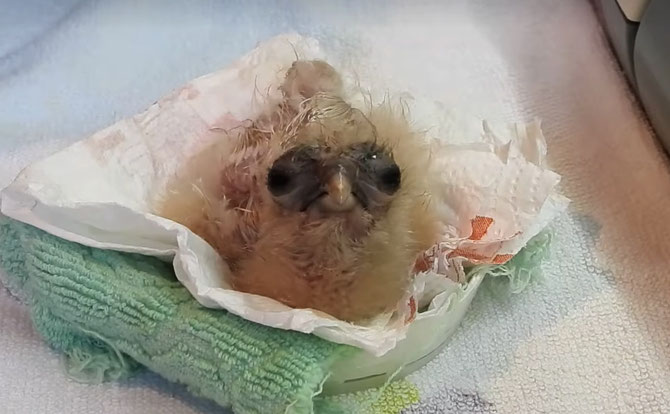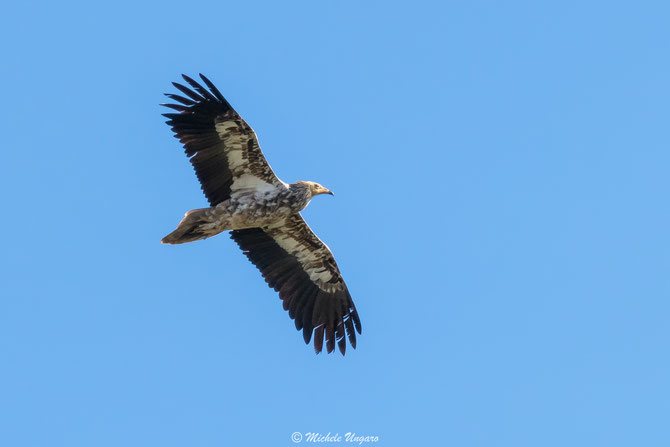
We have been working alongside our Italian colleagues to boost the Egyptian Vulture population for years now. This year, more Egyptian Vultures hatched in captivity, and will be released to the wild in the coming weeks!
Captive breeding of Egyptian Vultures in Italy
The CERM Centro Rapaci Minacciati Association has 18 aviaries, which host 43 Egyptian Vultures that come from Italian and Spanish facilities or that hatched at CERM. The chicks of breeding pairs at the centre are released in the Italian wild or remain in the ex-situ breeding centre to preserve an adequate “stock” of breeding pairs and to guarantee a wide genetic diversity.
In 2020, four more Egyptian Vultures hatched at the CERM, half of last year due to problems that arose between some pairs. Up until today, the centre produced 61 number of chicks since 1997!
Releasing Egyptian Vultures in Italy
Captive-bred Egyptian Vultures are released in Italy to support the population of this species in the country as it dramatically dropped over the last few years. From 2003 to 2019, the CERM released 33 captive-bred Egyptian Vultures testing three different release techniques: fostering (2003), which was negatively assessed and thus abandoned, hacking (2004-2019), which has given the best results up to now, and delayed-release (2017, 2019).
As part of the LIFE16 NAT/IT/000659 – LIFE EGYPTIAN VULTURE «Measures for the conservation of the Egyptian Vulture in Italy and the Canary Islands», ISPRA Istituto Superiore per la Protezione e la Ricerca Ambientale and the CERM Association Centro Rapaci Minacciati will release four Egyptian Vultures this year — two Egyptian Vultures that hatched this May and two juveniles born in 2018 and 2019 with the delayed method. Ahead of their release, the birds will be equipped with GPS tags provided by the Vulture Conservation Foundation (VCF) to monitor their movements in the wild. A CERM team will then travel over 600 km to take them to the release area and place them in an acclimatization aviary to get used to their surroundings. The team will monitor and feed them without any human contact to ensure their wellbeing for about five days until they fledge. Then, the team will track the movements of the birds thanks to the GPS tags, allowing them to understand their behaviour and take action to help the vultures if necessary.
Recent movements of released Egyptian Vultures in Italy
Thanks to the GPS tags, we realised that four Italian Egyptian Vultures released between 2015 and 2019 returned home in 2019 and 2020 — Lucrezia, Diego, Sara and Tobia (2019). Diego, Sara and Tobia are equipped with GPS tags provided by the VCF.

Diego hatched in 2018 at CERM and was released when he was one year old at the Regional Park of Murgia Materana in autumn 2019. Diego began heading south for his autumn migration in September 2019, but he cut his journey short and stopped a little further in southern Italy instead of heading towards Africa. Overall, it seems that as the age of released birds increased, the migratory instinct diminished. This behaviour occurred for three out of the four older birds that started their migration and stopped to winter in Italy. In May 2020, Diego returned to Basilicata, near his release area, after spending autumn and winter in southwestern Sicily. Along the way, he also visited several areas that were home to nesting vulture pairs. Now, he is still near the release site, but recently took a trip north and reached Parco Nazionale del Gargano.
Sara, an Egyptian Vulture released in 2015, arrived in Basilicata ahead of Diego. She began her spring migration from Niger in the sub-Saharan on 18 March and arrived in Basilicata on 5 May. She is currently still exploring the release area.
Egyptian Vultures in Italy

Once found all along Italy’s Tyrrhenian coast from Liguria to Sicily, the Egyptian Vulture suffered an 80% decline in its population since the 1970s due to poaching, disturbance of nesting sites, reduction in their food supply and illegal poisoning. With less than an estimated 10-12 breeding pairs in Italy, the Egyptian Vultures is considered critically endangered in the county. The population is concentrated mainly in the south of Italy, in Sicily (7-9 breeding pairs in 2019) and the south of the Italian peninsula around Basilicata and Calabria (3 pairs in 2019).






